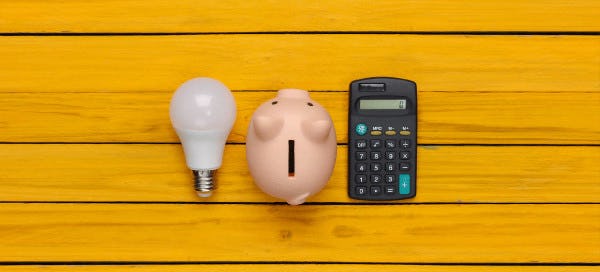Best 4 AC Units that Can Withstand the Texas Heat
Texas summers can be brutal, with temperatures often soaring to greater than 100° Fahrenheit. So what is your best bet for comfort and efficiency, when it comes to an air conditioning unit? By considering brand reputation, performance metrics, long-term costs, and maintenance needs, you can make a smart decision that keeps you cool – and saves you money.
Performance Metrics Explained
Let’s dig into several performance metrics, to help guide you on your search.
Seasonal Energy Efficiency Ratio (SEER): A higher SEER indicates better energy efficiency. For life in the Lone Star State, you should aim for a SEER of 16 or higher.
Energy Efficiency Ratio (EER): Like SEER but measured at peak conditions, an EER above 12 is considered efficient.
Cooling Capacity, measured in British Thermal Units (BTU): You want to ensure that your unit has the appropriate BTU rating to cool your space effectively. As a general rule, you need about 20 BTUs per square foot of living space.
Noise Levels (dB): Lower ratings are preferable. For residential units, aim for 55-70 dB, so you won’t wake up when your unit switches on at night.
Airflow Rate, measured in cubic feet per minute (CFM): A higher CFM ensures better air distribution. Units with 350-450 CFM per ton are typically effective in Texas.
Heating Seasonal Performance Factor (HSPF): Especially important for heat pumps, a higher rating means better efficiency during colder months.
Coefficient of Performance (COP): This ratio measures efficiency. A COP above 3 is also ideal for heat pumps.
Dehumidification Capability: You want your unit to efficiently remove humidity, improving overall comfort (especially in humid summers).
Fan Speeds: Multiple fan speeds provide better airflow control, enhancing comfort.
Thermostat Compatibility: Don’t forget to make sure your AC unit is compatible with smart thermostats for better energy management!
Top AC Brands for the Texas Heat
When choosing an AC unit, start by considering the brand’s history and reputation. Some of the most trusted names in the industry include:
Trane: Founded in 1913, Trane has a long-standing reputation for durability and efficiency, thanks to systems designed to endure the rigors of extreme climates.
Carrier: Established in 1902, Carrier is credited with inventing modern air conditioning! Their innovation continues today, as does their reliability, making them a popular choice in Texas.
Lennox: With a history dating back to 1895, Lennox is known for high-efficiency systems and a range of models suited to different needs and budgets.
Rheem: A relatively newer contender (founded in 1925), Rheem has made impressive strides in the HVAC market by focusing on energy efficiency and sustainability.
In short: units from Trane and Carrier receive high marks for reliability and performance, while Lennox is praised for energy efficiency. Rheem models often receive favorable feedback for their cost-effectiveness.
Comparison of Popular Models
When evaluating models, key features to consider include energy efficiency, cooling capacity, and noise levels. Here are some standout options:
Trane XR17: Known for its high SEER rating, the XR17 provides efficient cooling with variable speed technology, making it ideal for larger homes. It also operates quietly, at only 55 decibels.
Carrier Infinity 21: This model boasts a good SEER rating and features advanced humidity control. Its sound level is also impressive at around 65 decibels.
Lennox XC25: With a SEER rating of 26, it’s one of the most efficient units available. Its variable-capacity compressor allows for optimal comfort while maintaining low noise levels.
Rheem Prestige Series: This line offers a balance of affordability and performance, with SEER ratings up to 20. It’s well-suited for medium-sized homes.
Balancing Initial Cost With Long-Term Efficiency Savings
Of course, the initial cost of an AC unit is a significant factor. Prices can range from $2,500 to over $7,500, depending on the brand, model, and installation requirements.
Beyond the initial purchase price, consider long-term operating costs:
Energy Consumption: Efficient units can save you up to 30% on your energy bills compared to older models.
Maintenance Expenses: Regular maintenance can prevent costly repairs, so you should factor in an annual service fee for upkeep as well as change filters every 1-3 months.
Importance of Energy Efficiency
Energy efficiency is paramount in Texas, where air conditioning represents a substantial portion of energy bills.
SEER Ratings: Look for units with a SEER of 16 or higher. This translates to significant savings over time.
Environmental Benefits: Efficient units reduce your home’s carbon footprint, reducing negative impact to the environment. The more homes that are operating efficiently, the better for everyone.
Utilizing Technology
Technology has come a long way in air conditioning, as in so many other areas of our lives. Make the most of your investment in a new unit with a smart thermostat, which can learn your habits and adjust settings for maximum efficiency. Also, consider a variable speed compressor, which allows you to fine-tune cooling output, enhancing comfort and reducing energy use.
Maintenance Tips for AC Units & Reducing Operating Costs
Frequent problems can often be addressed with DIY fixes:
Is your unit not cooling? Check the filters, thermostat settings, and outdoor unit for debris.
Is it making unusual noises? Most likely, this is caused by debris in the fan, which is easily cleared, but you may also need to investigate potential loose parts.
Still not resolved? Contact an AC technician to come give your unit a look-see.
How to Reduce Cooling Costs During the Summer
First, adjust your thermostat settings, setting the thermostat a few degrees higher when you are away from home, and then turning it back down when you get back. Also, you can use ceiling fans to help circulate cool air, allowing for higher thermostat settings. And last, don’t forget to seal any leaks around windows and doors with weatherstripping and caulk. This is an easy DIY project that can be completed on a quiet Saturday, with big benefits.
Protect Your AC with Rhythm Energy
Texas weather can be unpredictable, and we all know how important it is for your HVAC to work without any hiccups. Ensure that your HVAC keeps running all year long, while avoiding surprise repair or replacement costs. We’ve partnered with Cinch to make sure you’re covered, from parts to labor. Learn more on our Protection Plans page.
FAQs
What are the best AC units for Texas heat?
The top options include Trane XR17, Carrier Infinity 21, Lennox XC25, and Rheem Prestige Series, all designed for efficiency and performance in extreme heat.
How do I determine the right size AC unit for my home?
Calculate the BTU requirements based on the size of your home, considering factors like insulation and the number of occupants. Then look for an AC unit that is sufficient.
What are the most important features to look for in an AC unit?
Focus on energy efficiency ratings (SEER/EER), cooling capacity, noise levels, and additional features like smart thermostat compatibility.
What are the energy efficiency ratings of top AC units?
Look for units with a SEER rating of 16 or higher for optimal efficiency, with some high-end models exceeding 25.
How much can I expect to spend on a new AC unit?
Expect to spend between $2,500 and $7,500, including installation, depending on the unit's size and features.




